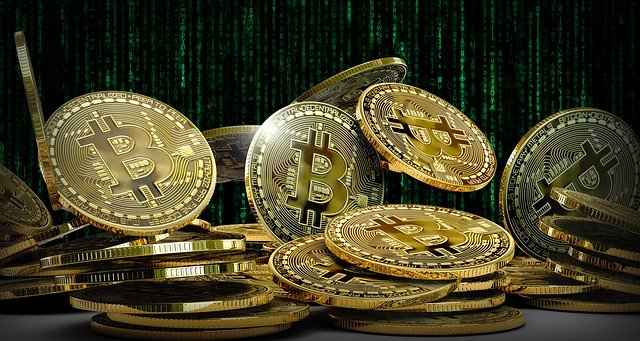How does the financial model explain the price movement of Bitcoin after halving?
Bitcoin is halved every four years. At present, the miner's reward is 12.5 bitcoins, and the block reward obtained by the miner will be halved. The next halving will soon occur in May 2020.
After the first halving in November 2012, it coincided with a sharp rise in Bitcoin. The price of Bitcoin has risen from $ 12 to more than $ 650. After a second halving in July 2016, prices skyrocketed to approximately $ 20,000 at the end of 2017.
Although it is uncertain whether the next halving will lead to price increases, each previous halving has pushed the bitcoin upsurge. The next halving naturally caused heated debate.

- Review of "Black Thursday": this venture fund received 68% of tokens at MakerDAO's debt auction
- Crazy currency contract: leverage up to 125 times, and overnight positions of 2 billion US dollars
- Vitalik argues with Bitcoin developers: Bitcoin is first P2P cash, second is digital gold
1. Stock flow model bullish on Bitcoin
One popular financial model often mentioned in these debates is the "Stock-to-Flow S2F" model. It models the price of Bitcoin based on the so-called "stock-to-flow ratio", which was originally used to assess the value of gold and other raw materials. By correlating "stock" (ie, issuance) with "flow" (ie, annual issuance), the model predicts that the price of Bitcoin will reach $ 55,000 to $ 100,000 after halving (this is equivalent to a market value of more than 10,000 One hundred million U.S. dollars).
There is no doubt that the S2F model has attracted a lot of attention after its release in March 2019. Various derivative models of this model have also appeared one after another, which is another push for Bitcoin maximizers to its super bullishness.
Efficient market hypothesis
According to the EMH, prices contain only new information. It assumes that the market is efficient enough and able to respond to an equilibrium price that correctly reflects all external or so-called external information. In turn, all internal or endogenous processes in the market have been reflected in prices. According to this view, only external forces (such as exchange hacking, central bank announcements, or political events) can change investor expectations and prices. As a result, extreme events such as bubbles or market crashes are caused by external news that has not yet been factored into price.
For EMH proponents, the Bitcoin supply schedule (encoded into the agreement and known to everyone) constitutes endogenous information, so it should have been included in the price, but this does not mean that the halving has been fully accounted for. Into.
3. The financial model not only replicates the market, but also adjusts the market
There is strong evidence that the price of Bitcoin has changed too much compared to the price expected by EMH. Studies have shown that relevant press releases can only explain a small part of price movements. Price dynamics are mainly driven by an endogenous positive feedback mechanism between investor expectations and prices. This phenomenon was described by George Soros as "market reflective."
Regardless of whether the S2F model is valid, whether to believe in EMH or anticipate an epic bitcoin rally in Bitcoin, these views underestimate the most fundamental reflexivity of financial markets.
The market, especially Bitcoin, is reflective. There is a positive feedback mechanism between expectations and prices: expectations can affect prices, which in turn can affect the expectations and behavior of traders or investors. This is a self-reinforcing positive feedback loop and the core of speculative bubbles and market crashes.
Due to the existence of reflective phenomena, models can shape financial markets. Historically, models have repositioned the market in some cases. For example, the famous Black-Scholes option pricing model leads to increased consistency between option price models and models. The economic collapse until 1987 broke its effectiveness. Similarly, current short-term volatility strategies, which use volatility as a source of risk input and return, have a transformative effect on the stock market because they systematically curb volatility.
Financial models are not hard sciences like physics. Financial models not only faithfully copy the market, but also actively transform the market. They can become the "self-fulfilling prophecy" proposed by the famous sociologist Robert K. Merton, that people always inadvertently make their own predictions a reality.
As a result, Bitcoin halving or predictions such as the S2F model itself may become a feedback loop that self-fulfills predictions and causes prices to rise. Although there is no guarantee that it will happen, if there are enough investors and traders to believe in these models, the model predictions may indeed become a reality.
This article was compiled from a column on Coindesk by Tobias A. Huber, a researcher in the Department of Management and Technology at the Federal Institute of Technology in Zurich, Switzerland.
Image credit: Pixabay
Author: May
This article is from bitpush.news. Please reprint the source.
We will continue to update Blocking; if you have any questions or suggestions, please contact us!
Was this article helpful?
93 out of 132 found this helpful
Related articles
- Bitcoin Exotic 8Q: Why was block 620826 born 1 second earlier than block 620825?
- Satoshi Nakamoto may be the creator of Monero. Do you accept the findings?
- A war on asset devaluation: BTC will witness the occurrence of financialization
- Monthly Financing Report | Global Blockchain Private Equity Financing in March was 3.767 billion, 90% of the funds flowed to the US market
- Crypto market battered in March, Tether becomes biggest winner
- Danger and Change: Can China Seize the Breakthrough Opportunity of the Digital Economy?
- Viewpoint | Scenario matching and technology maturity, why hasn't the blockchain made a large-scale application yet?





